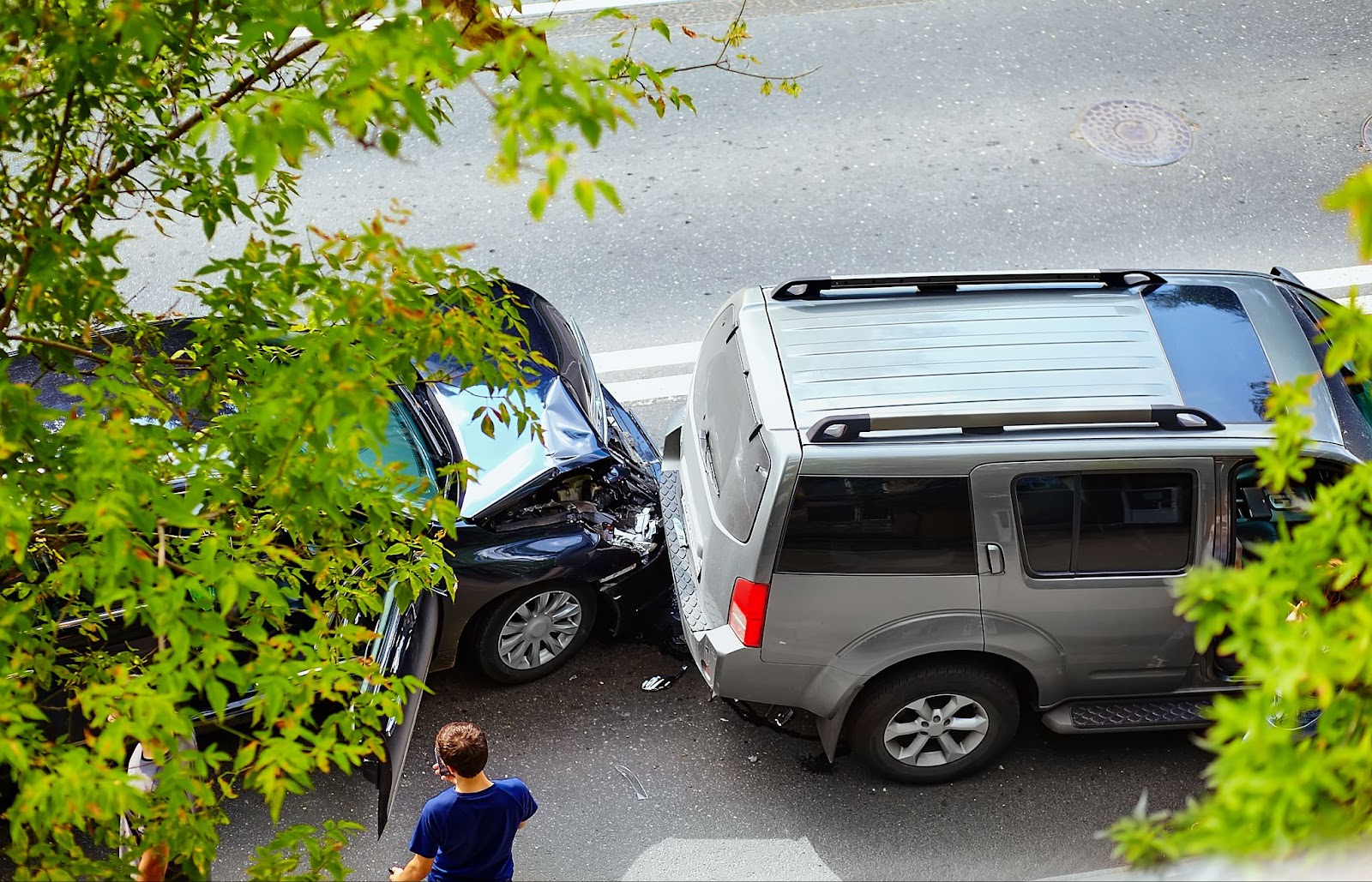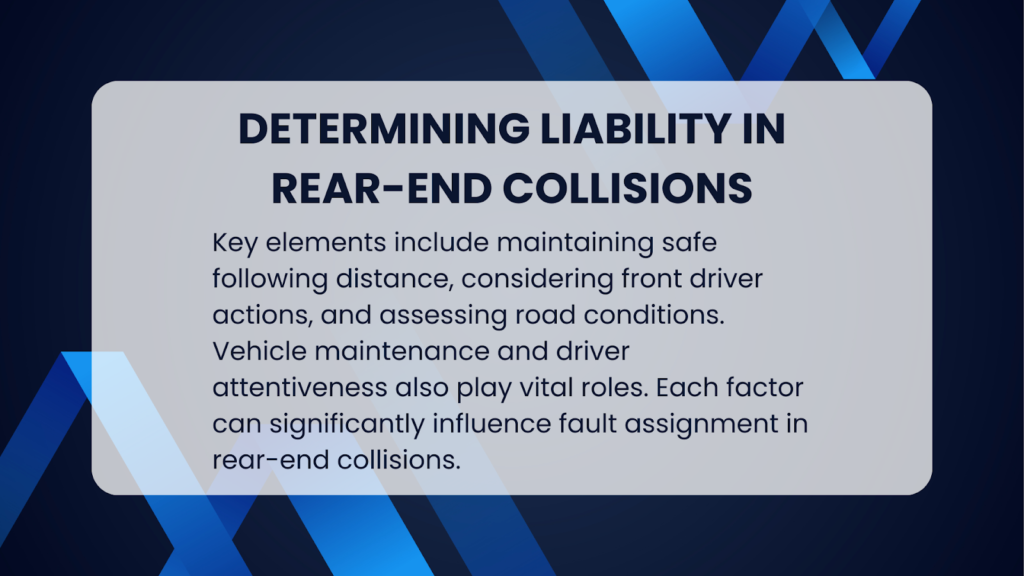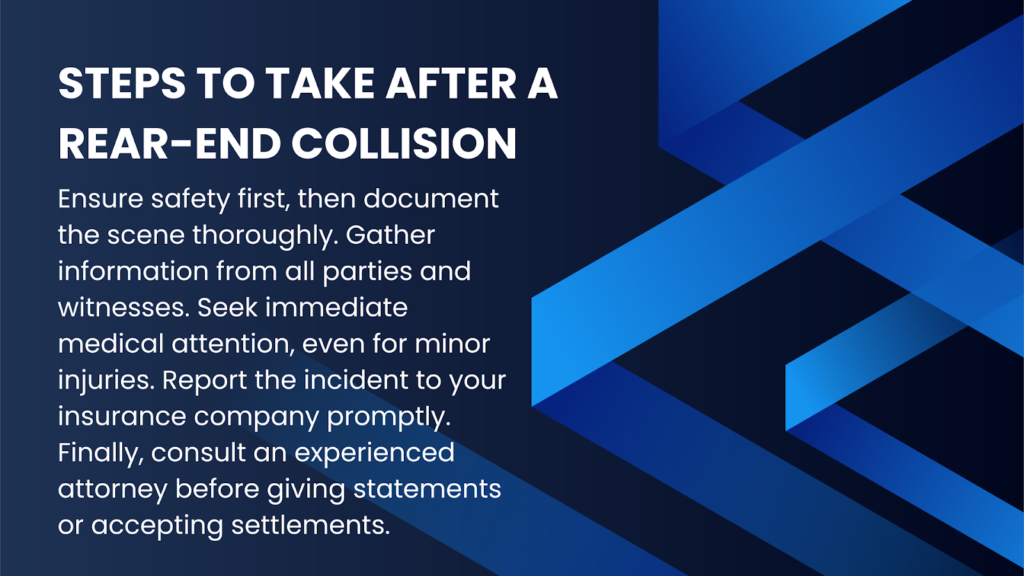
In Alabama, understanding the intricacies of contributory negligence and liability determination in these accidents is crucial for protecting your rights and securing fair compensation.
Rear-end collisions occur when one vehicle strikes the back of another. While often perceived as straightforward in terms of fault, these accidents can involve nuanced liability issues, especially in Alabama’s fault system.
Understanding Rear-End Collisions
Common causes of rear-end collisions include:
- Distracted driving (e.g., texting, eating);
- Tailgating;
- Sudden stops;
- Poor weather conditions; and
- Mechanical failures.
Understanding these causes is the first step in determining liability and navigating the legal aftermath of a rear-end collision.
Alabama’s Fault System
Alabama operates under a contributory negligence system, not comparative fault, which can significantly impact liability determination in rear-end collisions.
This system is notably different from the comparative fault systems used in many other states.
Key points about Alabama’s contributory negligence system:
- If a plaintiff is found even 1% at fault, they may be barred from recovering damages;
- This system places a high burden on plaintiffs to prove they were not at all responsible for the accident; and
- It underscores the importance of thorough evidence-gathering and expert legal representation.
The stringent nature of this system makes it crucial for all parties involved in a rear-end collision to understand their rights and responsibilities thoroughly.
Determining Liability in Rear-End Collisions
While the rear driver is often presumed at fault in rear-end collisions, this isn’t always the case.
Several factors can influence liability determination:
- Following Distance: The rear driver’s responsibility to maintain a safe following distance;
- Front Driver’s Actions: Sudden stops, reverses, or other unexpected maneuvers by the front driver;
- Road Conditions: How weather, traffic, or road maintenance affected the situation;
- Vehicle Condition: Brake light functionality, tire condition, and other maintenance factors; and
- Driver Attentiveness: Evidence of distraction or impairment for either driver.
Each of these factors plays a crucial role in determining fault in a rear-end collision case in Alabama.

The Role of Evidence in Liability Determination
Given Alabama’s strict contributory negligence system, gathering comprehensive evidence is paramount.
This evidence can make the difference between a successful claim and no recovery at all.
Critical types of evidence include:
- Police reports;
- Witness statements;
- Surveillance or dashcam footage;
- Accident reconstruction expert testimony;
- Medical records documenting injuries; and
- Photographs of the accident scene and vehicle damage.
The more thorough and compelling the evidence, the stronger the case for establishing liability and avoiding allegations of contributory negligence.
Legal Consequences of Rear-End Collisions in Alabama
The legal ramifications of rear-end collisions in Alabama can be significant, affecting various aspects of the involved parties’ lives.
Potential consequences include:
- Civil liability for damages;
- Increased insurance premiums;
- Points on driving records;
- Potential license suspension in severe cases; and
- Criminal charges in cases involving reckless driving or DUI.
Understanding these consequences emphasizes the importance of careful driving and proper legal representation in the event of an accident.
Steps to Take After a Rear-End Collision
Knowing what to do immediately following a rear-end collision can significantly impact the outcome of any subsequent legal proceedings:
- Ensure safety and call emergency services if needed;
- Document the scene thoroughly with photos and videos;
- Gather contact and insurance information from all involved parties;
- Obtain witness statements and contact information;
- Seek medical attention, even if injuries seem minor;
- Report the accident to your insurance company; and
- Consult with a qualified attorney before giving statements or accepting settlements.
Taking these steps can help protect your rights and strengthen your position in any legal proceedings that may follow.

The Importance of Legal Representation
Given the complexities of Alabama’s contributory negligence system and the nuances of rear-end collision cases, professional legal representation is often crucial. An experienced attorney can:
- Navigate the complexities of Alabama’s legal system;
- Gather and present compelling evidence;
- Negotiate with insurance companies;
- Represent your interests in court if necessary; and
- Help you avoid pitfalls that could jeopardize your claim.
The right legal counsel can significantly affect the outcome of your rear-end collision case, especially in Alabama’s challenging legal landscape.
Frequently Asked Questions
To further clarify key points about rear-end collisions, contributory negligence, and liability determination in Alabama, here are answers to some frequently asked questions:
Is the Rear Driver Always at Fault in a Rear-End Collision in Alabama?
While the rear driver is often presumed to be at fault, this isn’t always the case. Factors such as the front driver’s actions, road conditions, and vehicle maintenance can influence liability determination.
How Does Alabama’s Contributory Negligence System Affect Rear-End Collision Cases?
Under this system, if you’re found even slightly at fault for the accident, you may be barred from recovering any damages. This makes proving the other party’s complete fault crucial.
What if Both Drivers are Partially at Fault for a Rear-End Collision?
In Alabama, if both drivers are found to be at fault, neither may be able to recover damages due to the contributory negligence rule.
How Long Do I Have to File a Lawsuit After a Rear-End Collision in Alabama?
Alabama has a two-year statute of limitations for personal injury cases, including most rear-end collision claims. It’s crucial to consult with an attorney promptly to ensure you don’t miss this deadline.
Can I Still Recover Damages if My Brake Lights Weren’t Working During a Rear-End Collision?
If your brake lights weren’t functioning, you might be considered partially at fault. Under Alabama’s contributory negligence system, this could potentially bar you from recovering damages.
Expert Legal Guidance for Your Rear-End Collision Case
Navigating the aftermath of a rear-end collision in Alabama requires a thorough understanding of the state’s unique legal landscape, particularly its strict contributory negligence system.
From gathering crucial evidence to understanding various fault scenarios, every step in the process can significantly impact the outcome of your case.
Don’t risk losing your right to recovery due to Alabama’s strict contributory negligence system. Contact Baxley Maniscalco today for a free consultation. Our expert team will review your case, explain your options, and guide you through every step of the legal process.
Can't find what you're looking for? Search our site below.










